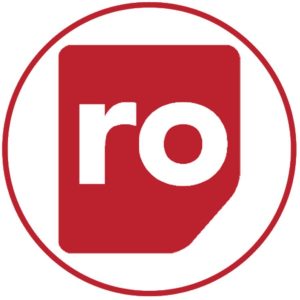 For a number of years, I taught college courses on entrepreneurship and small business management to students who aspired to become successful business owners. I applauded my students for recognizing early on that successful businesses require more than a great idea. Even if you have the “next big thing,” it is imperative for you to learn how to run a business — from creating a business plan and securing business finances, to becoming familiar with available tools and resources for small business owners.
For a number of years, I taught college courses on entrepreneurship and small business management to students who aspired to become successful business owners. I applauded my students for recognizing early on that successful businesses require more than a great idea. Even if you have the “next big thing,” it is imperative for you to learn how to run a business — from creating a business plan and securing business finances, to becoming familiar with available tools and resources for small business owners.
Last year, I had the pleasure of representing Wells Fargo at the National Association of Women Business Owners (NAWBO) conference. What I noticed then is that much of the discussion centered on ensuring that women-owned businesses are aware of available resources.
Today, there’s a growing list of government, non-profit and private organizations that provide resources for women in business. Here are a couple to consider:
Financial Institutions: More financial institutions are recognizing the importance and growth of entrepreneurship, specifically among women– nearly 30 percent of businesses are owned by women today. As a result, more financial institutions are adding services and programs specially geared toward helping women learn about financing options and how to obtain a small business loan. At Wells Fargo, for example, we recently committed to lend a cumulative total of $55 billion to women-owned businesses by 2020, in addition to offering numerous resources for small businesses in general.
U.S. Small Business Administration (SBA): Across the country, the SBA operates Women’s Business Centers – a network of educational centers designed to assist women in starting and growing small businesses. When a business owner is ready for a loan, she may want to consider an SBA loan, which is offered through banks and other lending institutions. SBA loan products, such as SBA 7(a) and 504 loans can be good options for some creditworthy small business owners who may not able to obtain conventional loans.
Another popular topic among small business owners is financing. Being prepared is key to securing funding for your business. Before you meet with a potential lender to apply for a loan you should be able to address: how much do you need; what will you do with the financing; a and how will you pay it back? To help maximize your chances, before you approach a lender, make sure to do your homework in each of these key areas:
How much do you need?
This the most fundamental question. Having a precise answer is the first step in proving that you’re prepared. If you aren’t sure how much to ask for, first revisit your business plan and business financials. Look at what you have available, and what you project will be needed to reach your goals, and then do the math.
Why do you need it?
This is really a two-part question. Lenders are interested in knowing whether you’re seeking financing to solve a problem or to seize an opportunity.
You should maintain an up-to-date business plan that you revise regularly as your business grows. If you’re just getting started, you can find plenty of guidance online, such as this step-by-step guide available at Wells Fargo’s Business Insight Resource Center: https://wellsfargobusinessinsights.com/business-stages/startup/writing-business-plan
How will you repay your loan?
The last question requires the most detailed documentation. Start with your current financials to show how much cash your business generates now. Then, prepare cash flow projections (your best estimates of how much you anticipate generating after you receive the loan). Include principal and interest payments in the forecasts, and keep the loan terms within bank policy guidelines.
If the loan is secured by collateral, be prepared to explain exactly what tangible assets you can offer as a guarantee. Examples include equipment, a house or a car. In addition to collateral, how much cash will you personally put into the business? When outlining your debts and assets, consider including your personal financial information as well. This will help the lender get a sense of your personal financial stability.
Once you’ve prepared your proposal and collected the necessary information and documents to back it up, you’re ready to talk to potential lenders. Be sure that you can explain clearly what you intend to do with the loan and why you expect the venture to succeed.
Finally, be prepared to discuss your own business qualifications. Because the success of a small business largely depends on leadership, your skills and knowledge are an important part of your company’s profile.
When you’ve done your research, have all your documents in order, and can credibly answer your lender’s questions, you’ve greatly improved your chances of securing capital and launching your business.
Are you a woman business owner? Visit a Wells Fargo store for more information on lending options.
Michelle Thornhill is senior vice president, Diversity & Inclusion for Wells Fargo & Company. Visit www.wellsfargobusinessinsights.com for more information.
This article has been prepared for informational purposes only. The accuracy and completeness of this information is not guaranteed and is subject to change. Since each individual’s financial situation is unique, you need to review your financial objectives to determine which approaches might work best for you.








